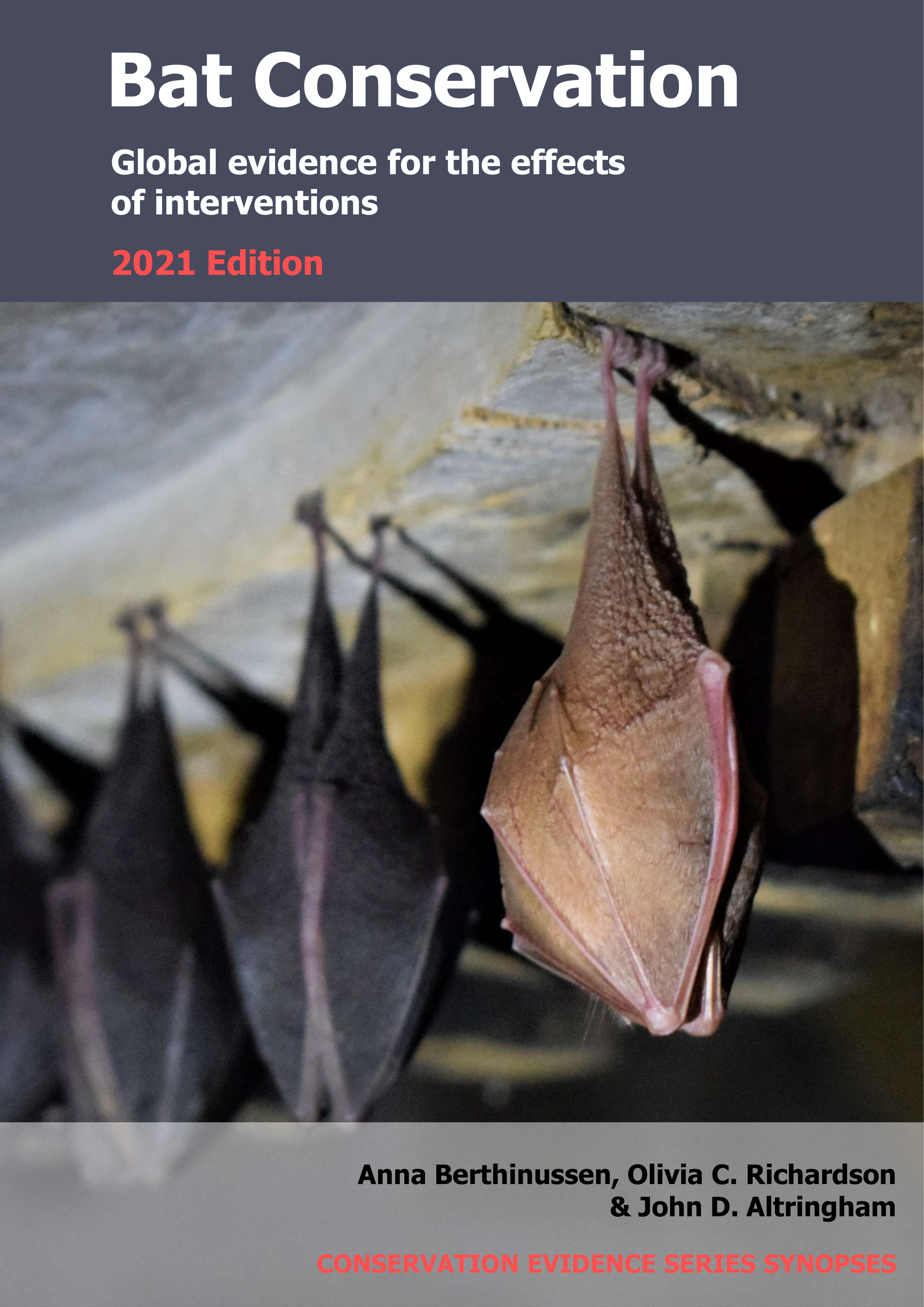Manage forest and woodland to encourage understorey growth
-
Overall effectiveness category Unknown effectiveness (limited evidence)
-
Number of studies: 1
View assessment score
Hide assessment score
How is the evidence assessed?
-
Effectiveness
60% -
Certainty
20% -
Harms
0%
Study locations
Supporting evidence from individual studies
A site comparison study in 2012–2013 of two forest sites in Brandenburg, Germany (Starik et al 2018) found that a forest managed to encourage understorey growth had higher overall bat activity and more bat species than a managed forest without understorey growth. Overall bat activity (of 11 bat species), the number of bat species recorded and bat diversity (reported as diversity indices) were higher in the forest with understorey growth (average 1.2 bat passes/hour, 3 bat species/night) than the forest without understorey growth (average 0.3 bat passes/hour, 2 bat species/night). One site (1 ha) was sampled in each of two managed forests, a Scots pine Pinus sylvestris monoculture stand without understorey, and a Scots pine stand with pedunculate oak Quercus robur in the understorey. Sites were selected to ensure they were a similar distance to settlements, water bodies and other land use types. At each of two sites, two bat detectors recorded bat activity simultaneously over a total of 37 nights in May–October 2012 and April–October 2013.
Study and other actions tested
Where has this evidence come from?
List of journals searched by synopsis
All the journals searched for all synopses
This Action forms part of the Action Synopsis:
Bat Conservation
Bat Conservation - Published 2021
Update 2020





)_2023.JPG)














